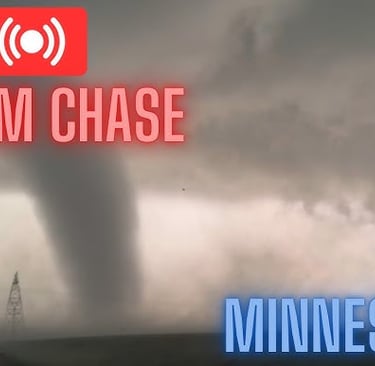Stay Informed: Twin Cities Weather Alerts You Need to Know
Stay updated with the latest watches and warnings in the Twin Cities. Our site provides real-time alerts to keep you informed and safe during severe weather.
TECHNICAL KNOWLEDGE
crazybaba.in


Understanding Weather Watches and Warnings
Weather watches and warnings are critical components of the meteorological alert system, particularly when it comes to severe weather events such as thunderstorms and tornadoes. A weather watch indicates that conditions are favorable for severe weather to develop. Essentially, this alert informs residents that they should remain vigilant and be prepared for potential adverse conditions. In contrast, a weather warning signifies that severe weather has either been detected in the area or is imminent. Thus, warnings necessitate immediate action to ensure safety, as they indicate a higher risk of severe impact.
The criteria for issuing these alerts vary based on the nature of the weather event. For tornado watches, atmospheric conditions are conducive, prompting meteorologists to advise residents to keep an eye toward the sky. Conversely, a tornado warning is issued when a tornado has been sighted or detected through radar, emphasizing the urgency of the situation. This differentiation is vital for residents, as timely responses can be the difference between safety and danger in severe weather scenarios.
The National Weather Service (NWS) plays a crucial role in this alert process, utilizing advanced technology and meteorological expertise to monitor weather conditions continuously. In the Twin Cities, the NWS issues watches and warnings based on real-time data analysis and forecasting models. The information disseminated is accessible to the public via various platforms, including television broadcasts, social media, and weather apps. Staying informed about these watches and warnings not only enhances personal safety but also fosters community awareness and preparedness in the face of potentially hazardous weather events.
Current Alerts in the Twin Cities
Residents of the Twin Cities should remain vigilant as current weather alerts have been issued, reflecting the potential for severe conditions in the area. The National Weather Service has released several warnings pertaining to severe thunderstorms that are anticipated to impact the region. These thunderstorms could bring damaging winds, heavy rainfall, and the possibility of flash flooding. It is crucial to stay updated with the latest information from local weather services to ensure personal safety.
In addition to severe thunderstorm warnings, there are ongoing watches related to tornado activity. The meteorological conditions present may lead to tornado formation, necessitating immediate attention to weather updates. Residents are advised to have a safety plan in place, which includes identifying a safe shelter, such as a basement or an interior room on the lowest floor of a building. It is also important to have a battery-operated radio or a reliable weather app installed on mobile devices to receive real-time updates.
Local authorities provide comprehensive guidance in case of weather emergencies. Instructional materials distribute important safety tips, recommending that individuals stay indoors during severe weather occurrences, particularly in the event of a tornado warning. Citizens should also be aware of potential power outages and ensure that they have necessary supplies, including food, water, and essential medications. Keeping an emergency kit prepared can greatly enhance safety during such unpredictable weather events.
As the weather situation evolves, updates will be shared through various communication channels, including social media and local news outlets. Therefore, it is vital for residents to remain informed about current alerts and to respond appropriately. Keeping awareness of impending conditions will allow individuals to take necessary precautions, safeguarding themselves and their loved ones during severe weather events in the Twin Cities.
How to Access Real-Time Weather Information
In today's fast-paced world, staying updated on weather conditions is essential, especially for residents of the Twin Cities, where weather can change rapidly. There are several reliable channels through which individuals can access real-time weather information. One of the primary sources is the National Weather Service (NWS) website, which offers detailed alerts, forecasts, and warnings. This governmental site provides comprehensive updates tailored to specific regions, including the Twin Cities, ensuring that users receive accurate and timely information.
Mobile applications have become increasingly popular for weather updates. Various apps are available that provide notifications about severe weather events, hourly forecasts, and radar maps. By enabling push notifications, residents can remain informed even when they're on the go. Popular weather apps often aggregate data from multiple sources, allowing users to compare forecasts and understand potential weather changes dynamically.
Local news stations also play a crucial role in disseminating weather information. Many local broadcasters offer streaming services and mobile platforms where viewers can access live updates during severe weather situations. These stations often have meteorologists who provide expert insights on impending weather events, helping residents interpret the significance of warnings and watches effectively.
Furthermore, social media has emerged as an informal yet effective means of accessing weather information. Many meteorologists and weather organizations utilize platforms like Twitter and Facebook to share real-time updates and safety tips. Following these accounts can help you keep abreast of urgent weather alerts relevant to the Twin Cities.
Utilizing weather maps is another crucial strategy for interpreting current conditions. These maps provide visual representations of precipitation, temperature, and wind direction, helping residents comprehend forecast patterns. Regularly checking these maps enhances preparedness, especially during severe weather seasons, allowing individuals to monitor shifts that might affect their area.
By leveraging these resources, residents of the Twin Cities can proactively manage their safety related to weather conditions, contributing to informed decision-making and effective response during emergencies.
What to Do When Severe Weather Strikes
When severe weather watches and warnings are issued, timely and effective response is critical to ensuring the safety of individuals and families. The first step in preparation is to create an emergency plan that outlines what actions to take in various scenarios, including tornadoes, thunderstorms, and other severe weather events. This plan should involve assigned roles for family members, including where to seek shelter and how to communicate during an emergency. Regularly reviewing and practicing this plan helps reinforce the actions necessary during stressful moments.
In addition to having a solid emergency plan, assembling an emergency kit is essential. This kit should contain essential supplies such as non-perishable food, water, medications, a flashlight, batteries, and important documents. It is advisable to keep this kit in a designated location that is easy to access during severe weather events, ensuring that all family members know its whereabouts. Including items like a first aid kit and personal hygiene products can enhance the effectiveness of your emergency kit.
When severe weather strikes, seeking shelter is paramount. It is crucial to identify safe spaces in your home, such as a basement or an interior room on the lowest floor, away from windows. In certain situations, heading to a designated storm shelter may be necessary. Staying informed during such times cannot be overstated. Regularly monitoring local news, weather apps, or official warnings ensures that you are aware of any updates or changes in the severity of the weather. Local agencies often provide valuable information and support, so tapping into community resources can enhance overall safety.
Preparedness and responsiveness can make a significant difference in mitigating the impact of severe weather. Having an actionable plan, a well-prepared emergency kit, a knowledge of safe shelter locations, and remaining informed are essential practices that contribute to personal and community safety during these challenging events. Ultimately, being prepared empowers you to act swiftly when severe weather threatens.
Post By :- crazybaba.in
